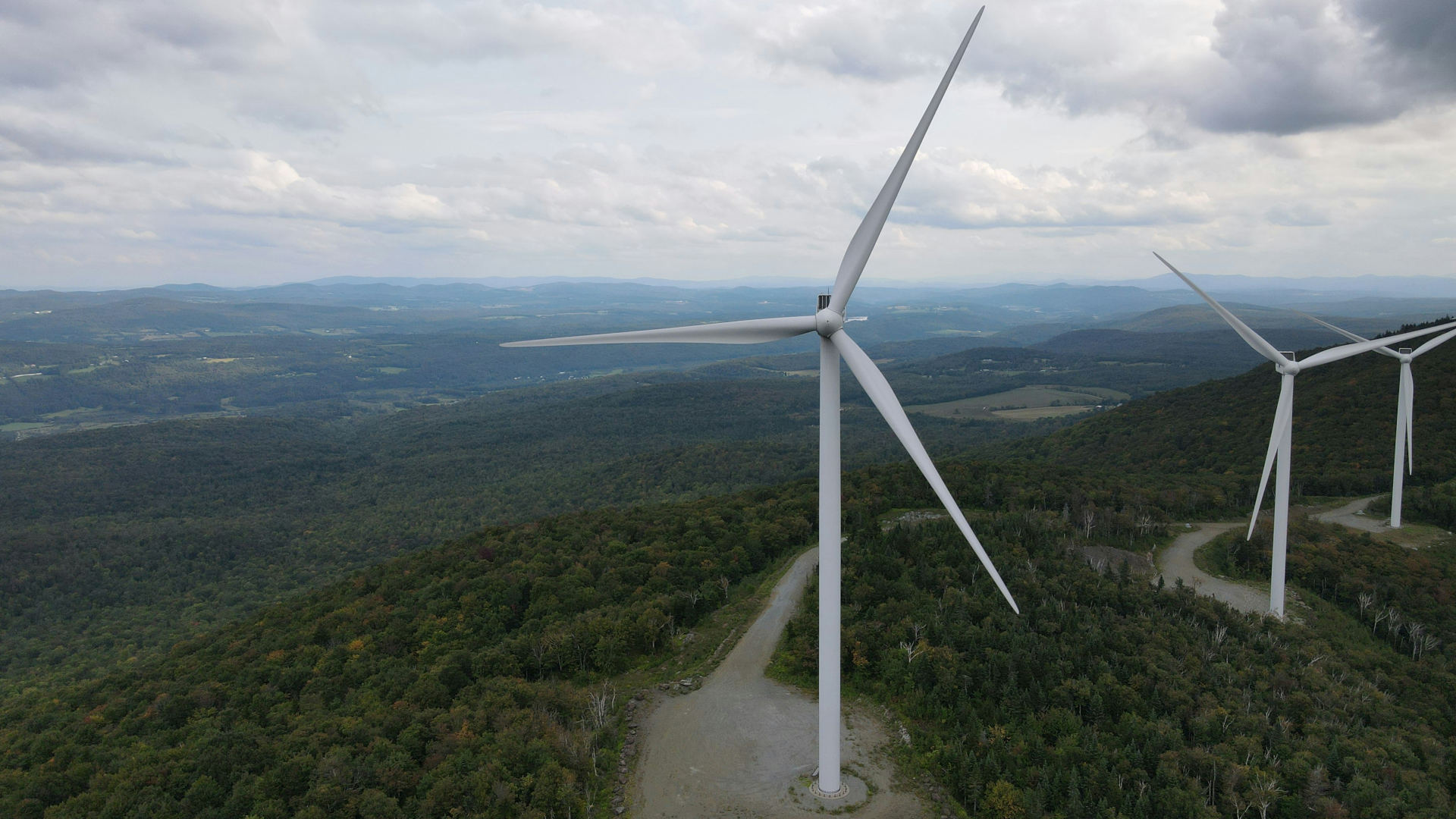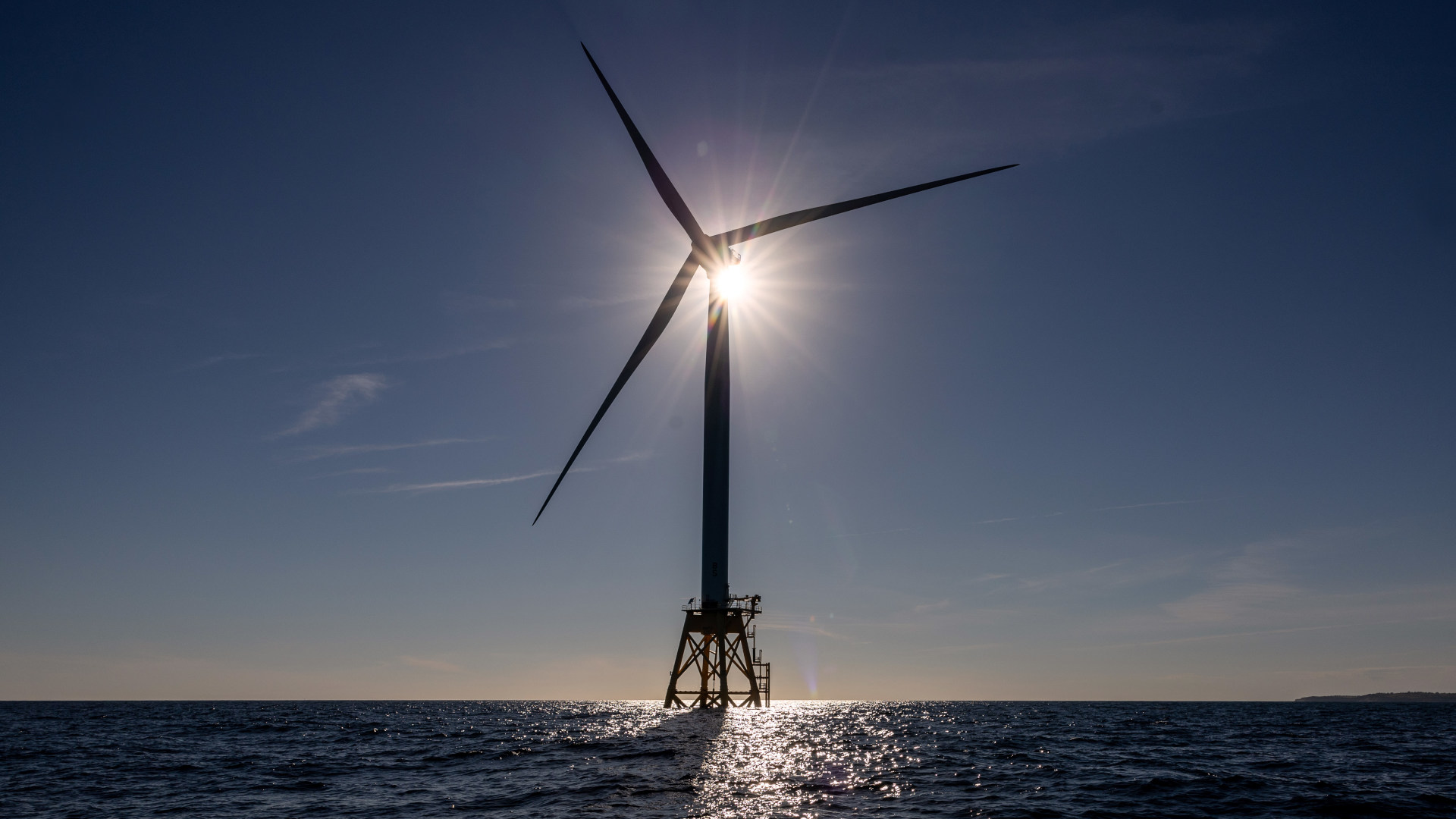Working On Wind Turbines: How a Growing Industry Is Handling Risk
On a cloudy fall day in 2023, Alfred Pebria and his fellow construction workers were installing a wind turbine in Solano County, California. They were trying to hoist a nacelle — a several-hundred-thousand-pound structure the size of a single-wide trailer that holds a turbine’s generator — to the top of a 344-foot tower. But part way up, the crane froze. “Can’t come down, can’t come up,” Pebria recalled. “Only thing that is coming up is the winds.”
This article was originally published by High Country News and is republished here under a Creative Commons license.
The wind started whipping at the nacelle. Pebria made sure the taglines — long ropes used to stabilize a load — were taut so it wouldn’t take out the crane. Meanwhile, workers stood inside the tower, which gyrated in the wind. “It just so happened that day we had pizza for lunch,” Pebria said. “So there was pizza all over the [inside] of that tower — regurgitated pizza.”
After 45 minutes, the crew repaired the crane and successfully raised the nacelle. That project, owned by the Sacramento Municipal Utility District, is one of about 10 wind-energy jobs that Pebria, a member of the Ironworkers Local 378 in Northern California, has worked.
Fortunately, lunch was the only casualty that day. But it felt like a close call. “There’s nothing safe about that job,” Pebria said. “You don’t manage safety. You manage the risk.” Workers need to watch out for equipment malfunctions, falls, electrical hazards, and more. Companies may demand that they rack up 14-hour days to finish projects quickly, but the work requires focus and alertness to stay safe. In addition, job sites are often in remote locations, far from emergency services.
Despite the safety issues, Pebria, like other wind-energy workers who spoke with High Country News, loves the job. The wind workforce is growing rapidly; in 2023, wind had the second-highest employment numbers of any electricity generation sector — 131,327 jobs, over twice as many as coal. (Solar led with nearly three times as many.) People are drawn to the work for some of the same reasons that make it risky: the chance to visit remote places, travel, enjoy expansive views from the top of the tower. “You just feel that adrenaline just coming through your gums,” Pebria said.
When safety issues do arise, though, Pebria has something that most workers in the industry lack: union training and protection. Union members go through extensive on-the-job learning in registered apprenticeships, and, thanks to protections like project labor agreements, they can flag any safety concerns without fear of losing their jobs. “They can identify something that doesn’t look right to them, and they speak up with a collective voice instead of an individual voice,” said Chris Hannan, president of the State Building and Construction Trades Council of California, which includes the Ironworkers Local.
“There’s nothing safe about that job. You don’t manage safety. You manage the risk.”
The Department of Energy, in a 2024 energy and employment report, found that 12 percent of workers in the wind industry were represented by a union, a rate that is lower than coal (16 percent) and natural gas (17 percent) electricity generation, but slightly higher than solar (11 percent).
The Inflation Reduction Act, or IRA, could help increase safety and unionization rates; it boosts tax credits for renewable energy projects that hire qualified apprentices, often through a union, and pay prevailing wages, meaning the average wage in a particular geographic area. The IRA also incentivizes project labor agreements, which are negotiated between construction unions and contractors and often include provisions for safety and workers’ rights.
But the future of the tax credits is uncertain. President-elect Trump has threatened to rescind all unspent IRA money, and the Treasury Department could reopen and rewrite the tax credit rules. Without federal funds and leadership, unionization rates in the wind industry will likely continue to vary across states. Going forward, Mijin Cha, who studies just transition at the University of California, Santa Cruz, said that new labor standards, as opposed to market incentives, would more effectively guarantee good jobs.
In the absence of unions, workers have found other ways to reduce risks. The Green Workers Alliance, which organizes people for safe and well-paid renewable energy jobs, is working with the Utility Workers Union of America to push for stronger standards for wind workers through the Occupational Safety and Health Administration, or OSHA.
OSHA and state offices are responsible for inspecting job sites and enforcing safety rules. But Matthew Mayers, director of the Green Workers Alliance, said the group’s members rarely, if ever, see inspections. In practice, workers’ safety depends on company procedures, or on the knowledge and empowerment of workers themselves. And companies can vary, from the owner of the wind farm to equipment manufacturers like General Electric and subcontractors like WindCom. “We work with OSHA as much as possible,” Mayers said, “but we also understand that it’s really up to workers building their own power to enforce better conditions.”
In 2023, wind had the second-highest employment numbers of any electricity generation sector — 131,327 jobs, over twice as many as coal.
Wind tech Patrick Foeday discovered the Green Workers Alliance on Facebook in 2020 and has since organized and educated his fellow techs. Beyond the paycheck, Foeday is passionate about green energy: “That’s one of the main reasons that wakes me up every morning — to get into renewables,” he said. But he’s also witnessed the worst parts of the job. He saw one coworker fall at least 10 feet. Another got heat stroke while working inside a mounted turbine blade, and Foeday had to use his first aid training while they waited about half an hour for an ambulance to arrive. “Every single day, there’s a fear,” he said.
For the past few months, the Green Workers Alliance has been surveying wind-energy workers about workplace safety. The survey is ongoing, but the group shared preliminary results with High Country News in early November, after 51 people had completed it. More than half said that they’d felt pressure to work beyond their safe capacity due to long hours or lack of rest days. Still more said they’d had to work alongside colleagues who were not properly trained.
Foeday would like to see stricter training requirements and more hands-on training. Wind techs typically work in at least pairs and rely on one another for their safety, so when someone isn’t adequately trained, it’s dangerous for everyone. “Now you have to pay attention to [the new tech], because if anything happened up in the air, he has to rescue you, or you have to rescue him,” Foeday said.
As the industry grows, increased unionization, stronger OSHA standards, pro-labor laws, and better training may all help boost job safety. In the meantime, though, the Green Workers Alliance is taking a mutual aid approach to improving conditions. In coming months, it will release a mobile-optimized website where workers can enter details about work sites, including pay, lodging, food, and working conditions, as well as learn about workers’ rights.
Currently, Foeday and about 100 wind techs have a group chat where they share concerns and offer advice. “It’s been a very, very useful tool for us,” he said. Due to the remote and mobile nature of the wind industry, such tools are providing new pathways for worker solidarity.
Brooke Larsen is a correspondent for High Country News and a freelance journalist writing from Salt Lake City, Utah.
This report was made possible in part by the Fund for Environmental Journalism of the Society of Environmental Journalists.











